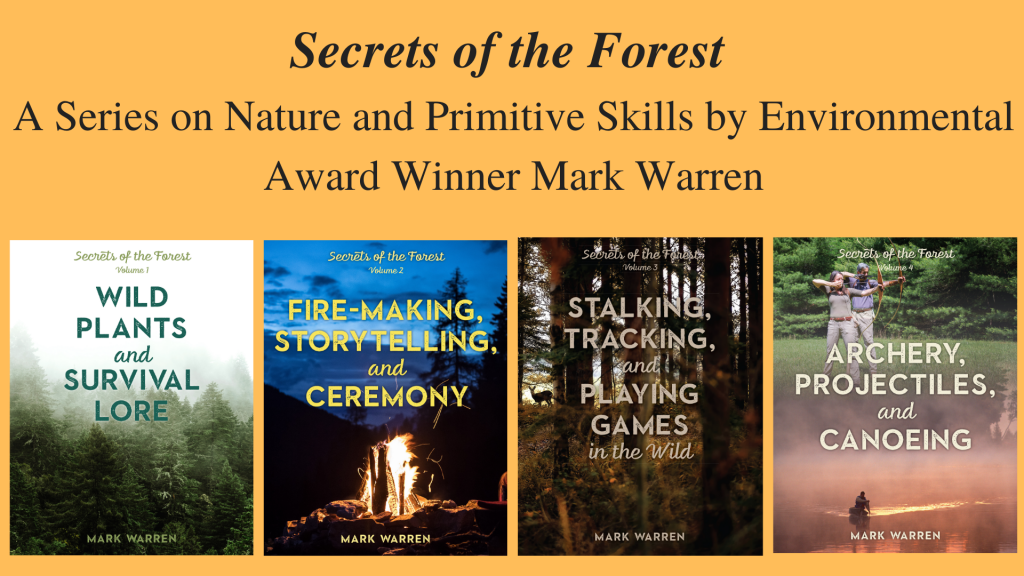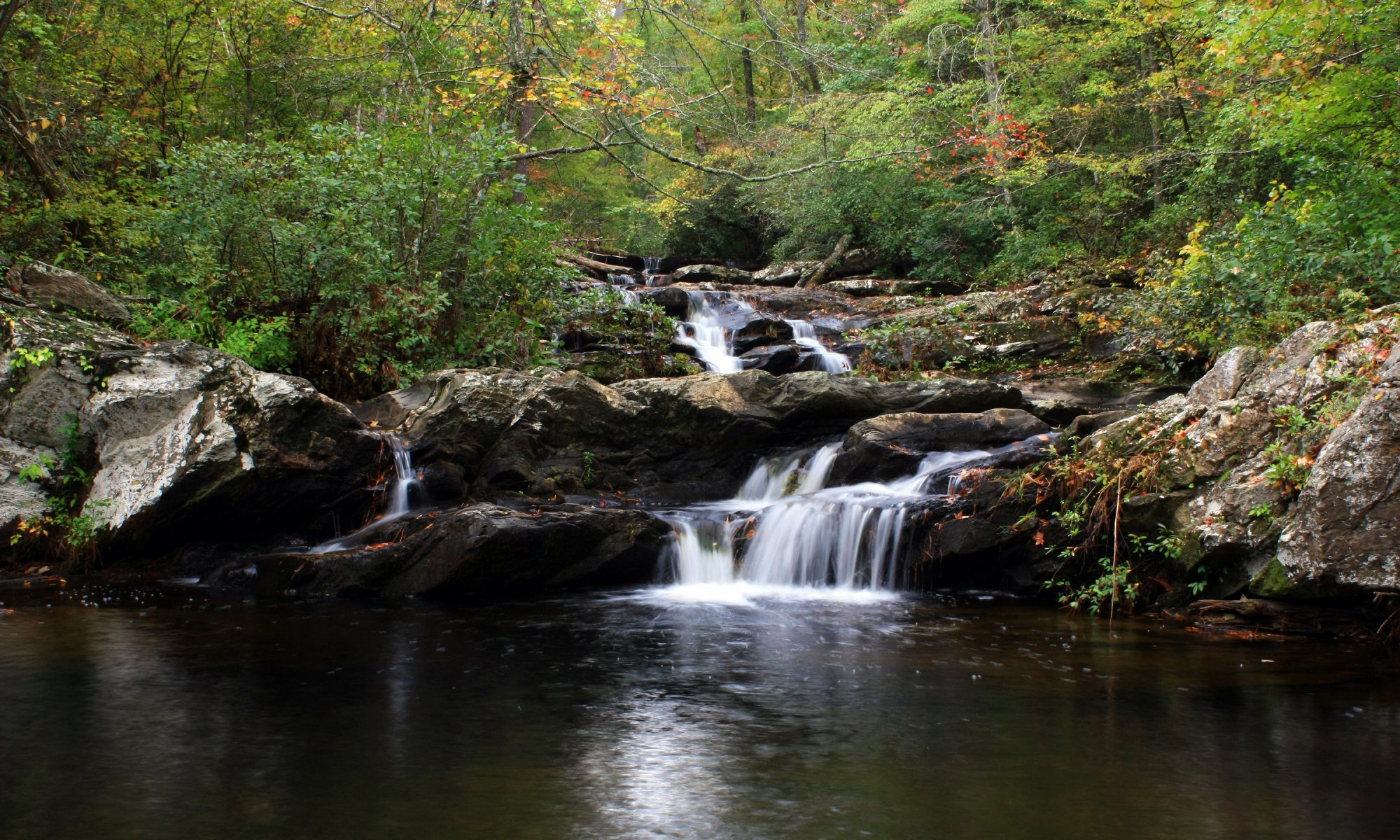There are two reasons that the last book of my Secrets of the Forest series is my favorite: Archery and canoeing have intertwined with my soul to become two of the most precious and defining parts of my life. So, in essence, I have saved the best for last.
Both arts originally came to me in the same arcane way. In each instance I was alone in the forest without a thought relating to either skill. One late afternoon – back in 1969 – on a self-imposed “survival trip,” I stood by the Chattooga River staring out over a dark emerald pool, a smooth tongue of water pouring into it from an upstream level three or four feet higher. The little falls made a steady rending sound as it broke into the lower pool’s surface – a liquid song containing both treble and bass parts, a steady roar that filled the air in the gorge like a never-ending exhalation from deep in the Earth.
Wafting from that breath, it seemed, was every secret of the forest that had existed since the beginning of time. I looked out at the moving water, and, unexpectedly, after days of not hearing my own voice, I spoke aloud.
“I should be in a canoe.”
No truer words have I spoken. From that day on, I began a mission of riverine passion, exploring hundreds of streams by canoe from the Chattooga in Georgia, west to the Rio Grande and Colorado River, north to Minnesota’s St. Croix and the Deerfield in Connecticut, and south to the mysterious blackwater rivers of northern Florida. Even in Georgia alone, one cannot cover all the creeks and rivers in one lifetime. But I tried.
A near identical revelation hit me one day as I walked a long open lane among the great white pines standing on the flood plain of Warwoman Creek. Again, without any premonition that I would do so, I spoke aloud.
“I should be shooting a bow,” I said. And so it began.
The first simple projectiles were sticks and stones. The compact heft of a rock must have quickly suggested its killing or maiming potential, but as a weapon it was most effective when affixed to the end of a handle. So attached it was a fearsome skull-cracker (the war-club), but to use it for hunting required one to stalk within reach of an animal. This proved to be, by and large, impractical. A “hunting” rock needed to travel through the air. And so, at first, man threw stones.
The first leap in stone-throwing technology came with the sling. From there the story evolved to modifying a stone to a sleek, sharp point and lashing it to a stick. Such a spear was originally a long-handled stabbing implement, until some unknown deft innovator(s) learned to send it sailing through the air javelin-style along a steady trajectory.
This tool was further improved by a mechanical advantage that might be said to emulate the architecture of a grasshopper’s powerful rear leg. The atlatl – a wooden spear-launcher – had the effect of extending the length of the thrower’s “arm” to provide more thrust. Eventually, a smaller spear came along to make a quantum leap, this one powered by the energy stored inside a stick that was bent out of shape by a taut string.
Surpassing the spear, the bow and arrow offered more distance and less chance for human error. However, the delicate technique for releasing the string is the deciding factor in an archer’s level of expertise and consistency. Archery epitomizes the marriage of strength and grace. Its proper technique is not innate. In fact, its secrets of operation seem so arcane as to elude all who pick up a bow for the first time without the benefit of instruction.
The blowgun is in a category of its own. It was not employed in warfare but used to hunt small animals like squirrels, rabbits, and birds. Invented in the Southeastern corner of North America, it spread to Central and South America. Its uniqueness lies in its power source: a sudden expulsion of breath.
All but two of the weapons covered in “Secrets of the Forest” volume 4 held their glory days as “top-of-the-line” airborne implements of hunting and/or warfare, each in its own time. The exceptions are the knife and tomahawk. Both were highly valued tools and had their essential places in history – but not as projectiles … especially in warfare. (It was ill-advised to hand over one’s weapon to an enemy, even if by a hostile throw.)
Part of this omission was due to the weapon’s composition. What sane craftsman would hurl his stone axe or knife at anything? Too much work went into the production of a fine edge. Even so, it is almost certain that men were sometimes forced to throw a knife or hand-axe out of desperation. If an enemy eyed you over the sights of a rifle, wouldn’t you?
With the advent of knives and hawks forged from steel, it was inevitable that they would be thrown. Anyone who handles metal knives long enough will eventually yield to the compelling urge to throw one, trying to stick it in a stump. Once one has success at it, he will likely repeat it. In fact, it can become a passion. This I know, because I began my “knife-throwing career” when I was nine-years-old, secretly experimenting with all things with a sharp point from my mother’s kitchen. More than six decades later I continue to feel that same craving to sink a blade into a target.
The novelty of throwing edged steel did emerge among the mountain men of the Rockies in the eighteenth and nineteenth centuries. At an annual rendezvous – the social event of their year – contests of knife- and hawk-throwing provided one more arena for taking bets and boosting reputations. Once it became a sport, I am inclined to bet that throwing these implements may have worked its way into practical application.
Whether or not that is true, these two sports are still alive today. The temptation to throw anything at a target is probably an atavistic itch – a carry-over from mankind’s long history of hurling weapons toward prey. I see evidence of this every time a group of young students arrives at my school in my gravel parking lot. To their eyes, every stone is a projectile, every tree a target. Imagine their faces when I inform them that our agenda will include spears or knifes or tomahawks. In an age of all things electronic and glittery, such enthusiasm is gratifying.

